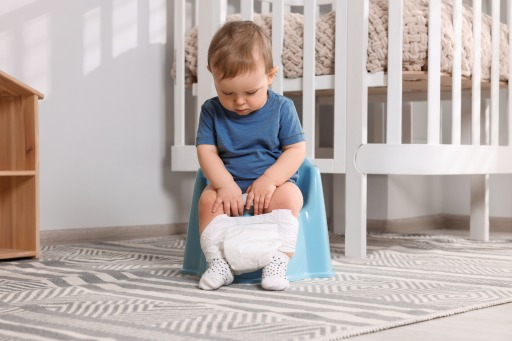The topic of baby "poop" may seem funny, but it actually provides valuable information about your baby's health. This article aims to educate not only expectant parents, but all interested parties about the various aspects of baby stool, including its color and consistency, and how these characteristics can be indicative of your baby's well-being.
Newborn stool: basic information
Newborn stool, known as meconium, is usually dark green in color and has a tar-like consistency. This stool consists of substances that the baby swallowed in the womb, such as amniotic fluid and mucus. Meconium usually appears only in the first few days after birth.
As your baby's digestive system develops, his stool changes. Breastfed babies often have mustard-yellow stools and may look like Dijon mustard (apologies to all its lovers). This means that your baby is getting all the nutrients he needs from breast milk. Babies fed artificial milk tend to have slightly thicker and lighter stools because the process of digesting artificial milk is different from that of breast milk. The colour and consistency of the stools of babies fed artificial milk can also vary depending on the type of milk just used.
Normal stool colour and consistency
Colour: Normal stool color ranges from yellow to light brown, including various shades of mustard yellow.
Consistency: In healthy children, stools are usually thin and can range from mushy to soft, sausage-like stools. It is quite normal for small lumps or mucus to occur in the stool if they are infrequent and minimal.
Other stool colours and their appearance
Green stool: This may mean that your baby is getting too much foremilk (watery milk that comes in first during a feeding) and not enough hindmilk (richer, fatter milk that comes in later) Try breastfeeding longer at each breast so that your baby gets enough hind milk
Black stools: May indicate blood in the digestive system, which is a serious cause for concern See your pediatrician immediately
White or grey stools: May indicate liver problems This requires immediate medical attention
Red stools: May be a sign of blood in the stool, which may be caused by a food allergy or infection The cause should be consulted with a pediatrician
Stool consistency and its indicators
Thin or watery stools: can be a sign of diarrhea, which can be caused by illness, teething or a change in diet. Ensure that the child is getting enough water, and if diarrhea persists, consult the pediatrician.
Hard stools of small hard poops: indicates constipation, which may be caused by dehydration, not enough fiber, or side effects of certain medications. Increase your child's water intake or offer plum juice (with your pediatrician's approval).
When to seek medical help
Look out for the following symptoms, which may be a reason to see a paediatrician:
- Unusual stool color
- Abnormal particles in the stool
- Foamy stools
- Excessive mucus in the stool
- Presence of blood in the stool
- Constant watery stools
Although the topic of baby poop may seem humorous at first, monitoring your child's stool can be an essential aspect of monitoring his or her health. When you understand what the different colors and consistencies mean, you'll be able to make sure your child is healthy and address any problems early on. In time, you may find that you become quite knowledgeable in this unexpectedly important area.
Note: Enterosgel is intended for use with children 0+. It is one of the few products that is completely eliminated from the body, not absorbed into the blood, does not contain preservatives, etc., i.e. it is very gentle on the body of the smallest patients.
We always recommend consulting a doctor and reading the instructions for use before use.
